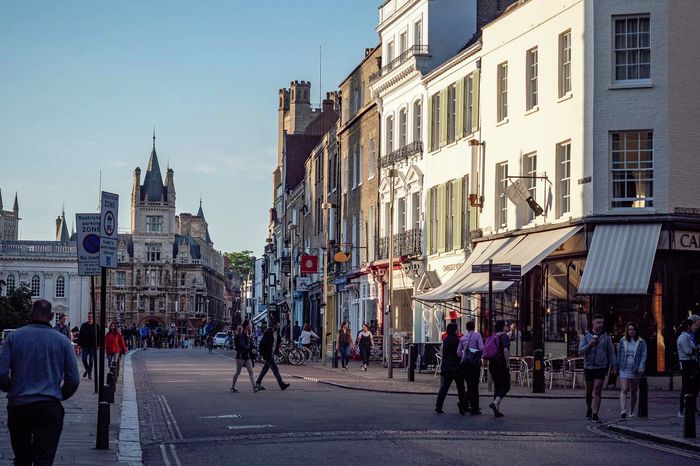Undergrad applications to Uni hardship funding double
Last year 292 applications were made to the scheme, compared to 117 in the previous year

The number of applications made to the University Hardship Fund more than doubled last year, a Varsity investigation can reveal.
In the academic year 2021/22, 117 applications were made to the Hardship Fund, a scheme which provides grants to students in “unforeseen financial need”. 102 were successful. Last year, this jumped to 292 applications, with 211 successful claims.
This represents a drastic increase in the number of undergraduate students in need of financial support, and a departure from a fairly consistent level of need in the five years prior – between 2018-22, an average of 114 students applied for Hardship Funding, with a peak at 163 in 2020/21.
The dramatic increase in applications is likely due to the ongoing cost of living crisis, according to the University’s own report. Cambridge cited the cost of living crisis as one of the main reasons for students’ financial difficulties last year, alongside parents being less able to offer financial support, and other unforeseen family circumstances.
In 2022, an NUS survey revealed 96% of students were cutting back as a result of the crisis, with 1 in 10 accessing food banks. 90% of students surveyed said that their mental health had been adversely affected.
Although maintenance loans have increased gradually over the last 5 years, this has not matched rates of inflation. Last January, the IFS warned that these real term decreases in maintenance support would leave students on maximum maintenance loans £1,500 poorer.
This cut – 11% in real terms – in government support, is larger than any real cuts since the early 1960s, according to the House of Commons library.
Maintenance loans are also, in real terms, becoming harder to access. Since 2008, the household income level at which a student qualifies for the maximum maintenance has remained unchanged at £25,000, even as the purchasing power of that income has declined. CPI data suggests that goods and services costing £25,000 in 2008 would now be valued at £38,741.
The dramatic increase in applications made to hardship funding may also be due to the lack of alternative support available to Cambridge students. A Varsity investigation from January this year revealed that “the University has given significantly less extra support to its students than its Russell Group peers”.
Although Cambridge has set aside an extra £500,000 for the hardship fund, it has failed to match other cost of living policies implemented by Russell Group Unis. The University has not offered one off payments, or bursary uplifts. Unlike Edinburgh and LSE, rent was not frozen. Even the £500,000 injection into hardship funding pales in comparison to the £2.5 million committed by the University of Sheffield.
While the number of successful applications last year increased by 106% – from 102 to 211 – the amount awarded has increased by a whopping 215%. Cambridge awarded £296,024 last year, an amount far higher than the £94,043 granted in 2021/22.
This increase in funding dished out by the University means that each applicant has been receiving far more than previously offered, with an average of £1403 awarded per applicant this year, compared to £922 in 2021/22. For the first time in the last 5 years, applicants have received in excess of £2500.
While Cambridge has made efforts to keep up with the increase in demand, the percentage of successful applications has fallen. The 72% success rate in the academic year 2022/23 was substantially lower than the years 2018-22, during which an average of 85% of applications were successful.
Last year, a Varsity investigation revealed that the proportion of successful applications to the Hardship Fund vary significantly by College. Students from colleges with large state school intakes were less likely to receive support – 63% of applications from Lucy Cavendish students were unsuccessful. In comparison, Trinity saw a 100% success rate.
Students have also told Varsity that the application process is not only bureaucratic, but invasive, and even “humiliating”. One student at Murray Edwards said it felt like college “were trying to find a way to blame me, or to redirect me to anywhere else”.
 News / Cambridge students set up encampment calling for Israel divestment6 May 2024
News / Cambridge students set up encampment calling for Israel divestment6 May 2024 News / Cambridge postgrad re-elected as City councillor4 May 2024
News / Cambridge postgrad re-elected as City councillor4 May 2024 News / Some supervisors’ effective pay rate £3 below living wage, new report finds5 May 2024
News / Some supervisors’ effective pay rate £3 below living wage, new report finds5 May 2024 News / Gender attainment gap to be excluded from Cambridge access report3 May 2024
News / Gender attainment gap to be excluded from Cambridge access report3 May 2024 News / Academics call for Cambridge to drop investigation into ‘race realist’ fellow2 May 2024
News / Academics call for Cambridge to drop investigation into ‘race realist’ fellow2 May 2024






